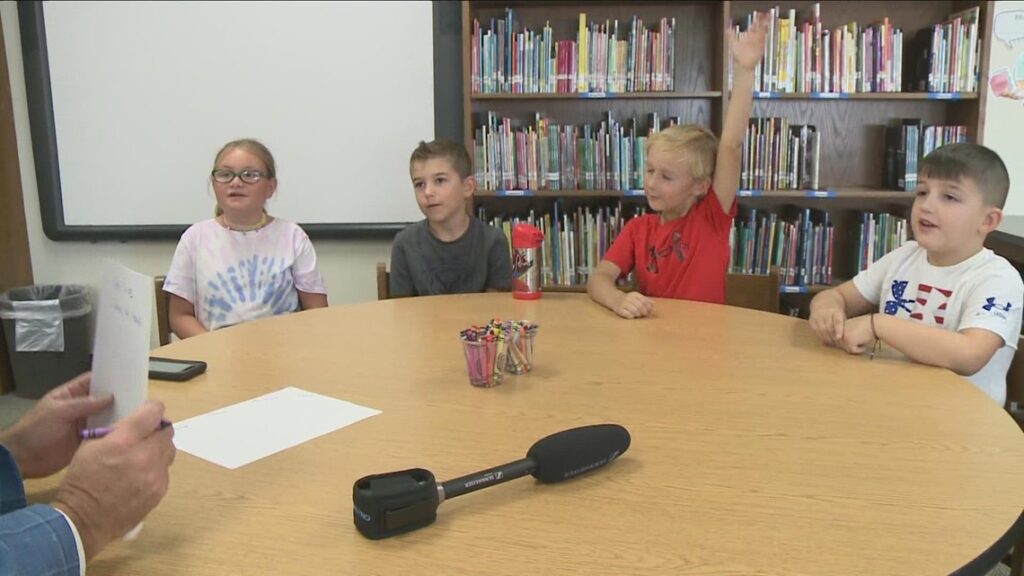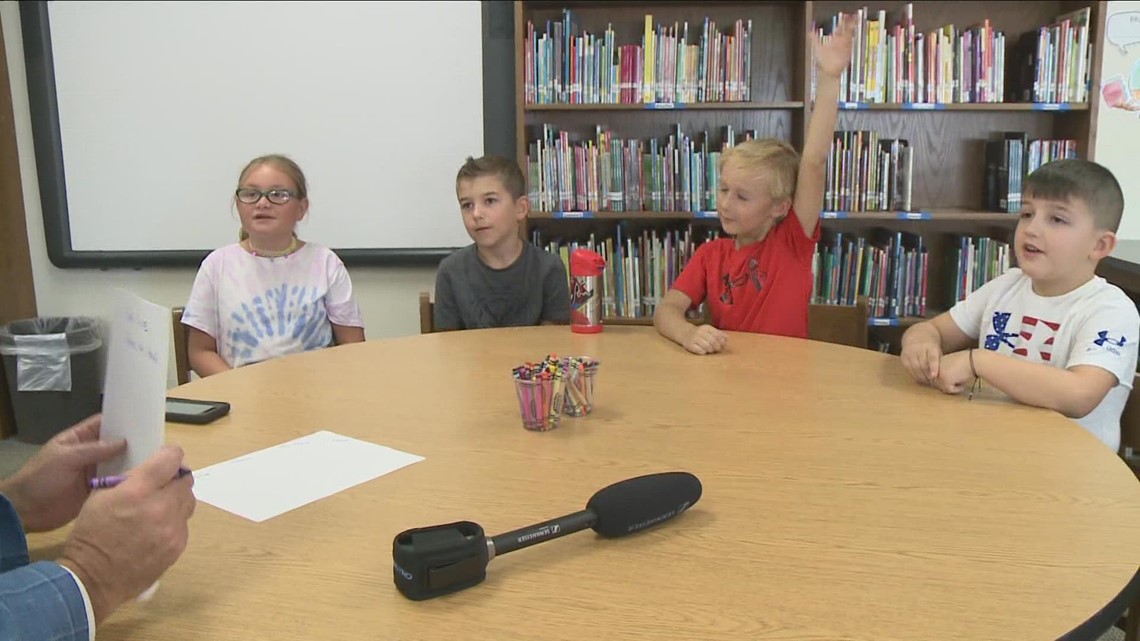
Decoding the Age of First Graders: What to Expect and How to Prepare
Entering first grade is a significant milestone in a child’s educational journey. Understanding the typical age of first graders and the developmental expectations associated with this stage can help parents and educators provide the best possible support. This article delves into the specifics of the age of first graders, academic and social expectations, and strategies to ensure a smooth transition into this exciting new chapter.
What is the Typical Age Range for First Graders?
In most education systems, children enter first grade around the age of first graders, which is typically six years old. However, the exact age of first graders can vary slightly depending on the cut-off dates set by individual school districts or states. These cut-off dates determine when a child must turn a certain age (usually five) to be eligible for kindergarten and subsequently, six to enter first grade. Because of these cut-off dates, you’ll often find a range of age of first graders between 5 and 7 years old in a typical classroom, though the majority will be six.
It’s important to check with your local school district to understand their specific enrollment requirements and cut-off dates. This information will help you determine when your child is eligible to begin their first-grade adventure. Understanding the age of first graders and the associated expectations is crucial for preparing your child for this academic leap.
Academic Expectations for First Graders
First grade marks a significant step up in academic rigor compared to kindergarten. Children are expected to develop foundational skills in reading, writing, and mathematics. Here’s a more detailed look at what’s typically expected of a child in first grade:
Reading
Reading is a primary focus in first grade. The goal is to move children from recognizing letters and sounds to reading simple sentences and short stories. Key reading skills that are emphasized include:
- Phonics: Understanding the relationship between letters and sounds.
- Sight Words: Recognizing common words automatically (e.g., the, and, is).
- Reading Comprehension: Understanding the meaning of what is read.
- Fluency: Reading smoothly and accurately.
Teachers often use a variety of methods to teach reading, including guided reading, shared reading, and independent reading. Parents can support their child’s reading development by reading aloud together, providing access to books, and encouraging them to read independently. Understanding the age of first graders and their reading capabilities can aid in choosing appropriate reading materials.
Writing
Writing skills also develop significantly in first grade. Children learn to write simple sentences, focusing on proper grammar, punctuation, and capitalization. Key writing skills include:
- Sentence Structure: Constructing simple sentences with a subject and a verb.
- Spelling: Learning to spell common words correctly.
- Handwriting: Developing legible handwriting.
- Creative Writing: Expressing ideas and thoughts in writing.
Writing activities may include journal writing, story writing, and practicing letter formation. Parents can encourage writing by providing opportunities for their child to write notes, letters, or stories. Recognizing that the age of first graders impacts their fine motor skills is important when setting expectations for handwriting.
Mathematics
In mathematics, first graders build upon their understanding of numbers and develop basic arithmetic skills. Key math concepts include:
- Number Sense: Understanding the value of numbers and their relationships.
- Addition and Subtraction: Solving simple addition and subtraction problems.
- Measurement: Measuring length, weight, and time.
- Geometry: Identifying basic shapes and their properties.
Math instruction often involves hands-on activities, games, and problem-solving exercises. Parents can reinforce math skills by incorporating math into everyday activities, such as counting objects, measuring ingredients while cooking, or playing math-based games. The age of first graders is a crucial time for solidifying these foundational math skills.
Other Subjects
In addition to reading, writing, and mathematics, first graders also learn about science, social studies, art, music, and physical education. These subjects provide a well-rounded education and help children develop a broader understanding of the world around them. While the focus may vary, integrating these subjects helps cater to the diverse interests of children around the age of first graders.
Social and Emotional Expectations
Beyond academics, first grade is also a time for significant social and emotional development. Children are expected to learn how to interact with their peers, follow classroom rules, and manage their emotions. Key social and emotional skills include:
- Cooperation: Working effectively with others in group activities.
- Respect: Showing respect for teachers, classmates, and school property.
- Self-Control: Managing emotions and behavior appropriately.
- Problem-Solving: Resolving conflicts and solving problems constructively.
Teachers often use strategies such as social stories, role-playing, and classroom meetings to teach social and emotional skills. Parents can support their child’s social and emotional development by modeling positive behavior, teaching conflict resolution skills, and encouraging empathy. Understanding the age of first graders and their social development can help parents set realistic expectations. [See also: Social Skills Development in Elementary School]
Preparing Your Child for First Grade
Preparing your child for first grade involves a combination of academic, social, and emotional readiness. Here are some tips to help your child make a successful transition:
Academic Preparation
- Reading Aloud: Read to your child regularly to foster a love of reading and improve their reading skills.
- Practicing Letters and Sounds: Help your child practice recognizing letters and sounds.
- Math Games: Play math-based games to reinforce math concepts.
- Writing Practice: Encourage your child to write notes, letters, or stories.
Social and Emotional Preparation
- Social Interaction: Provide opportunities for your child to interact with other children.
- Role-Playing: Practice social situations through role-playing.
- Emotional Regulation: Teach your child strategies for managing their emotions.
- Problem-Solving Skills: Help your child develop problem-solving skills.
Practical Preparation
- School Visit: Visit the school and classroom with your child before the first day.
- Supplies: Gather the necessary school supplies.
- Routine: Establish a consistent bedtime and morning routine.
By taking these steps, you can help your child feel confident and prepared for the challenges and opportunities of first grade. Remembering that the age of first graders brings unique challenges can help you tailor your preparation strategies accordingly. [See also: Back to School Checklist for Parents]
Addressing Common Concerns
Parents often have concerns about their child’s readiness for first grade. Here are some common concerns and how to address them:
Academic Readiness
If you’re concerned about your child’s academic readiness, talk to their kindergarten teacher or a school administrator. They can provide valuable insights and suggest strategies to help your child catch up. Early intervention is key to addressing any learning gaps before they become significant obstacles. The age of first graders is a formative time, and addressing these concerns early can make a big difference.
Social and Emotional Readiness
If you’re concerned about your child’s social and emotional readiness, work with them on developing social skills, emotional regulation, and problem-solving skills. You can also seek guidance from a child psychologist or counselor. Creating a supportive and understanding environment is crucial for helping children develop the social and emotional skills they need to succeed in first grade. Keep in mind the age of first graders often brings increased independence and social awareness.
Separation Anxiety
Some children experience separation anxiety when starting first grade. To help ease this anxiety, talk to your child about their feelings, visit the school together, and establish a consistent drop-off routine. Acknowledge their fears and reassure them that you will be back to pick them up. Understanding that the age of first graders can be a sensitive time helps parents approach separation anxiety with empathy. [See also: Overcoming Separation Anxiety in Children]
The Role of Parents and Educators
Both parents and educators play a crucial role in supporting first graders. Open communication and collaboration between home and school are essential for ensuring a child’s success. Parents can support their child’s learning by:
- Attending school events and parent-teacher conferences.
- Communicating with the teacher about any concerns or questions.
- Providing a supportive and encouraging home environment.
- Helping with homework and projects.
Educators can support first graders by:
- Creating a positive and engaging classroom environment.
- Providing individualized attention and support.
- Using a variety of teaching methods to cater to different learning styles.
- Communicating regularly with parents about their child’s progress.
By working together, parents and educators can create a strong foundation for first graders to thrive academically, socially, and emotionally. The combined effort can help children navigate the challenges associated with the age of first graders. [See also: Parent-Teacher Communication Strategies]
Conclusion
Understanding the typical age of first graders, the academic and social expectations, and strategies for preparation is essential for ensuring a smooth and successful transition into first grade. By focusing on academic readiness, social and emotional development, and practical preparation, parents and educators can work together to create a supportive and enriching learning environment for these young learners. Remember, first grade is a significant milestone, and with the right support, children can thrive and develop a lifelong love of learning. Recognizing the developmental stage associated with the age of first graders is key to fostering a positive educational experience.

